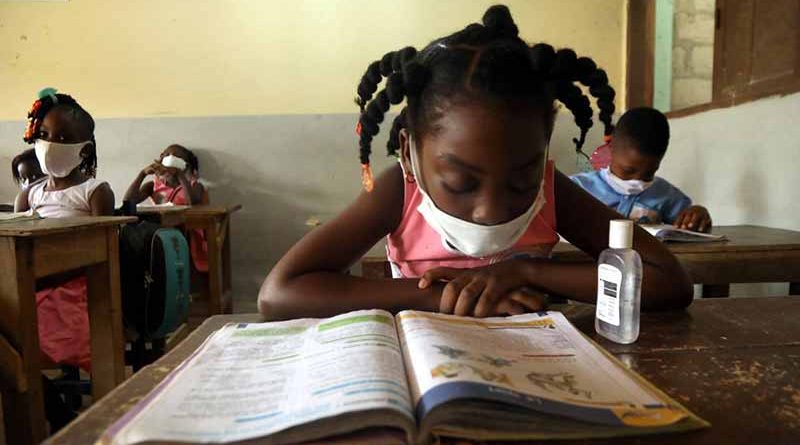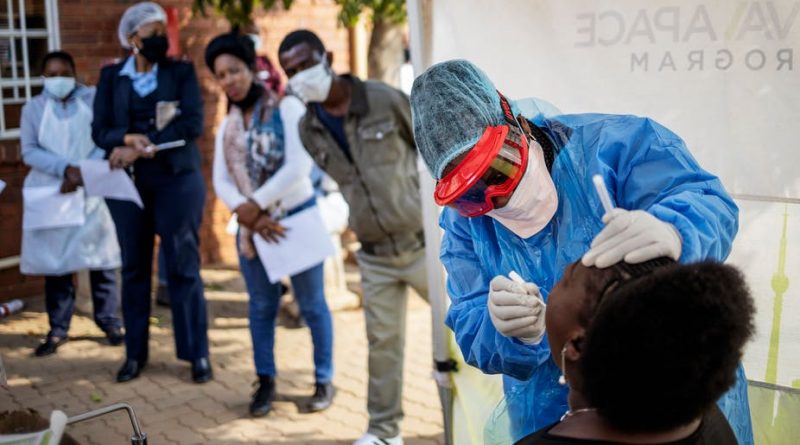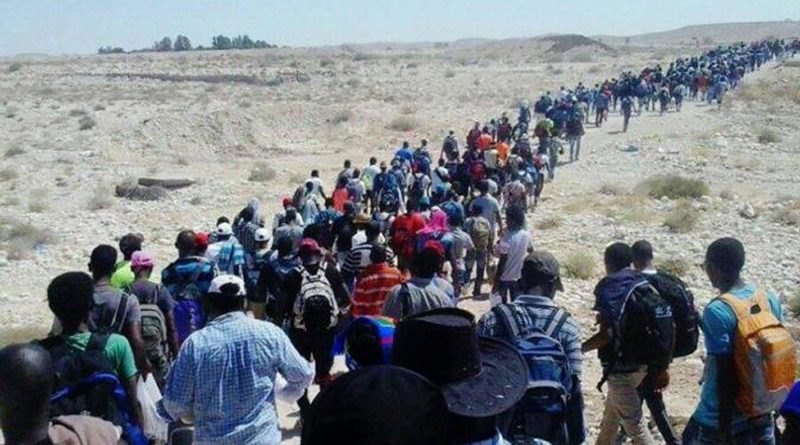OXFORD University will start an initial analysis of data from its late-stage trial of the experimental COVID-19 vaccine it is developing with AstraZeneca after 53 infections among its volunteers, the study’s chief investigator said on Thursday.
The Oxford Vaccine Group’s director, Andrew Pollard, said in a media briefing there were “lots of cases” of infections in its Phase III trial in Britain, Brazil and South Africa.
The first two sets of interim data from vaccine trials from Pfizer and BioNTech last week and Moderna on Monday were released after more than 90 infections among volunteers.
Pfizer had planned to publish initial data after about 60 infections, but it exceeded its target after the big jump in infections recently in the United States.
Pollard’s comments came after data published on Thursday showed the Oxford/AstraZeneca vaccine in Phase II studies produced a strong immune response in older adults, suggesting that those at higher risk of serious illness and death from COVID-19 could be protected.
Pollard said there was no attempt to release the study in the same week as those companies’ data, the first from late-stage vaccine trials, but rather the study happened to be ready for publication.
Earlier on Thursday, he said he expected Phase III data to be released by Christmas.
The Phase III results showing the efficacy of the vaccine will be released via AstraZeneca, in the same way, they have been published by other drugmakers over the past week or so, Pollard said.
He said the trial would also publish the findings in a peer-reviewed medical journal but initial data would likely be released before then.
Source – Thomson Reuters Foundation.
ZIMBABWEAN authorities have closed a boarding school in the west of the country after at least 100 students tested positive for coronavirus, a state-owned newspaper has reported.
The school in the Matabeleland North province is the first to report a significant spike in infections since schools began re-opening for end-of-year examinations in September. It is also the first to be closed over a cluster of positive cases.
Authorities fear that the country could see a surge after infections increased this month. New cases jumped to 294 last week compared to 109 new cases in the previous week, according to the ministry of health.
Zimbabwe has so far recorded 8,945 confirmed cases of COVID-19, and 260 deaths.
President Emmerson Mnangagwa’s government closed schools in March as the coronavirus pandemic spread. Teachers unions have complained that most public schools are not adequately equipped to prevent the spread of COVID-19, which the government denies.
The Bulawayo-based Chronicle newspaper quoted Defence Minister Oppah Muchinguri-Kashiri saying most of the students at the affected school were asymptomatic while the rest had mild symptoms.
“Cabinet resolved and directed that where we are faced with this situation, the school must be closed immediately… The situation is now under control in the hands of appropriate authorities,” said Muchinguri-Kashiri, who heads the cabinet’s task-force on COVID-19.
Muchinguri-Kashiri could not be reached for further comment.
Source – Thomson Reuters Foundation.
TOTAL coronavirus cases in Africa have surpassed the 2 million mark despite the slow addition of reported infections compared to other regions around the world.
With over 2,012,000 cases, Africa represents under 4% of the world’s reported cases, which many experts believe to be an undercount.
They believe that many COVID-19 infections and related deaths in Africa are likely being missed as testing rates in the continent of about 1.3 billion people are among the lowest in the world, and many deaths of all types go unrecorded.
The region’s COVID-19 fatality rate at nearly 2.4% is the third-highest in the world behind Latin America and the Middle East, though total reported deaths is far lower. Africa has reported over 48,000 deaths so far.
Countries such as Sudan, Chad, and Egypt have reported the highest fatality rates across the continent at 7.81%, 6.28%, 5.82%, respectively. South Africa has the continent’s highest number of reported COVID-19 cases at over 750,000, with a death rate of 2.71%, based on a Reuters tally.
With the continent representing nearly 16.7% of the entire world population, about 15 cases are reported for every 10,000 persons.
Africa’s lower number of infections and deaths compared Europe, South America and the United States can in part be attributed to several factors aside from a likely undercount.
The virus hit Africa later than other continents, giving medical personnel time to set up field hospitals, source oxygen and ventilators, and learn from treatment improvements.
South Africa introduced one of the world’s toughest lockdowns in late March when the country had confirmed just 400 cases. Experts also point to the continent’s demographics.
The risk of developing severe COVID-19 increases with age, so the continent’s relatively youthful population is likely contributing to a lower overall fatality rate, experts have said.
African governments also have experience battling deadly infectious diseases such as Ebola, which killed more than 11,000 people in West Africa in 2013 to 2016, so officials took notice when the new coronavirus started spreading around the globe and many put early measures in place to curb the spread.
More recently, however, the pandemic is having an impact on other vital health services in Africa as countries are forced to redirect already stretched resources, a regional head of the World Health Organization said.
Source – Thomson Reuters Foundation.
A major humanitarian crisis is unfolding in Ethiopia, the United Nations refugee agency has warned, with more than 27,000 people now having fled heavy fighting to Sudan.
The pace of the exodus, some 4,000 a day, may also indicate huge uprooting of people within the Tigray region, U.N. agencies said, adding that teams on the ground were overwhelmed.
“People are coming out of Ethiopia really scared, afraid, with stories saying they have been fleeing heavy fighting and there’s no sign of the fighting stopping,” Babar Baloch, spokesman of the U.N. High Commissioner for Refugees (UNHCR), told a Geneva news briefing.
Ethiopia’s prime minister warned on Tuesday that a deadline for rebel northern forces to lay down arms had expired, paving the way for a push on the Tigray region’s capital in the two-week conflict destabilising the Horn of Africa.
Sudan already hosts nearly 1 million refugees including those who have fled conflict and poverty in Chad, Eritrea, Central African Republic and South Sudan.
“UNHCR is warning that a full-scale humanitarian crisis is unfolding as thousands of refugees flee ongoing fighting in Ethiopia’s Tigray region each day to seek safety in eastern Sudan,” Baloch said.
“UNHCR is on standby to provide assistance in Tigray when access and security allow,” he added.
Jens Laerke, the spokesman of the U.N. Office for the Coordination of Humanitarian Affairs (OCHA), told the briefing: “There may be massive displacement inside Tigray and that is, of course, a concern and we try to prepare the best way possible.”
Baloch also repeated concerns for tens of thousands of Eritrean refugees settled in Ethiopia, saying that clashes had occurred near to one of the settlements, but that poor communications were complicating aid efforts.
The creation of a humanitarian corridor is a priority, added OCHA’s Laerke, saying negotiations were ongoing. “We are in continuous contact with the federal government and relevant regional authorities,” he told the briefing.
A World Food Programme official said it was operating humanitarian flights daily to Kassala in eastern Sudan and can deploy helicopters to reach isolated groups. It had already delivered more than 1 tonne of food to a Sudanese site – enough to support 60,000 people for a month.
Source – Thomson Reuters Foundation.




